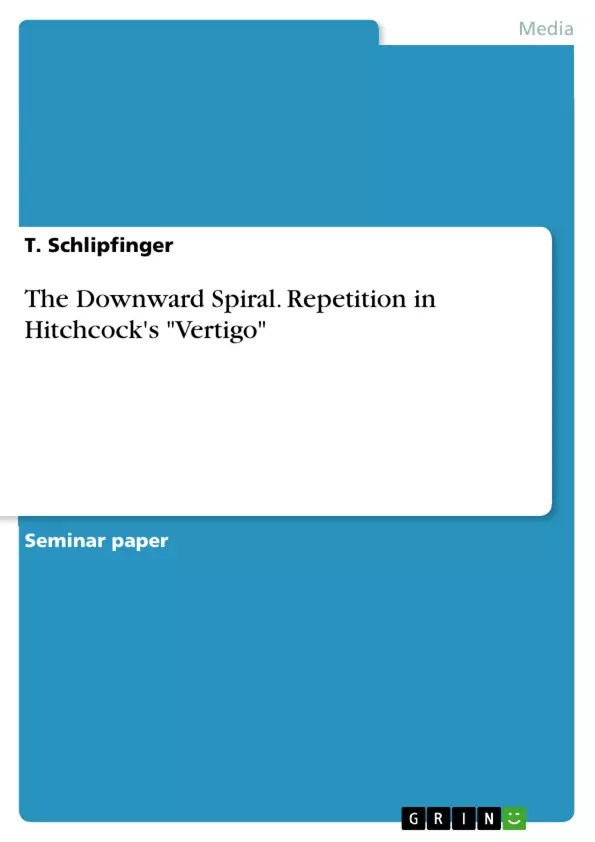It is hard to determine the one single defining factor that makes Alfred Hitchcock’s Vertigo what it is today: by many considered to be one of the best movies ever made. The plot is – despite all its unrealism – thrilling from the first minute to the last. James Stewart’s and Kim Novak’s performances are more than convincing to say the least and Bernard Herrmann’s music dug itself into the collective ears of a whole generation. However, there is one thing that all those factors have in common and which therefore, arguably, defines the power of Vertigo most accurately: in a way all those features suck the viewers into the movie and take them on a spiral-like journey down to the bottom of Vertigo. This becomes apparent from the first minute onwards, when Hitchcock establishes the spiral as the defining motif of his movie during the intro-sequence. In this paper I am going to argue that the whole movie follows a spiral-like structure and through repetition of certain motifs Hitchcock is able to suck the viewer deeper and deeper into the story of Vertigo.
Table of Contents
- Introduction
- The Legacy
- Cast & Characters
- The Spiral
- Scottie's Descent
- The Final Twist
- Conclusion
Objectives and Key Themes
This paper explores the intricate structure and thematic elements of Alfred Hitchcock's Vertigo, analyzing how the film utilizes a spiral motif to draw the viewer deeper into its narrative. It delves into various aspects of the film, including characters, imagery, and plot, highlighting the recurring themes and their impact on the overall tension and impact.
- The spiral motif as a central element in the film's structure
- Analysis of recurring themes and imagery
- The connection between Vertigo and 19th-century gothic literature
- The complex relationship between the characters, particularly Scottie and Madeleine/Judy
- The influence of Hitchcock's filmmaking style and his view of actors
Chapter Summaries
The introduction establishes the argument that Vertigo follows a spiral-like structure, emphasizing the film's ability to draw the viewer deeper into the story.
The Legacy chapter examines the film's legacy and explores its connections to 19th-century gothic literature, specifically drawing comparisons to Edgar Allen Poe's "Ligeia." This section discusses how the film's unrealistic plot and complex psychological themes contribute to its lasting impact.
The Cast & Characters chapter examines the film's key characters, including Scottie and Madeleine/Judy. It analyzes their roles and motivations within the narrative, highlighting the complexities of their relationships and the impact of James Stewart's performance.
The Spiral chapter delves into the analysis of the spiral motif and its significance in the film's structure. It explores how the repetition of certain motifs and images, such as mirrors, windows, and shadows, contributes to the film's increasing tension and psychological impact.
The Scottie's Descent chapter continues the analysis of the spiral motif, focusing on Scottie's journey and his descent into obsession. It examines how the film uses the spiral motif to visually and emotionally represent Scottie's mental and psychological state.
Keywords
Vertigo, Alfred Hitchcock, spiral motif, 19th-century gothic literature, Edgar Allen Poe, James Stewart, Kim Novak, psychological themes, suspense, film structure, imagery, recurring themes, character analysis, cinematic techniques.
- Citation du texte
- T. Schlipfinger (Auteur), 2011, The Downward Spiral. Repetition in Hitchcock's "Vertigo", Munich, GRIN Verlag, https://www.grin.com/document/193967



